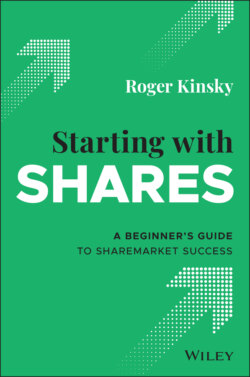Читать книгу Starting With Shares - Roger Kinsky - Страница 17
Tip
ОглавлениеThrowing darts at a share listing pinned to a board isn't really practical, but choosing a mix of shares by random selection is certainly possible. Choosing shares by random selection is still known as a dart or dartboard approach.
Some time ago I tried each of these two strategies to see the result. I chose a mix of 10 shares based on my research and I chose another mix using a selection process based on random numbers. I wrote down the shares each strategy had indicated and their current price. Some time later I checked the share prices and worked out the profit or loss each strategy had produced.
Guess what? Each strategy resulted in a profitable investment and, in fact, the dart approach was slightly superior to the careful selection approach!
When I pointed this out in a share investing course, one student responded with a simple question: ‘If that's so, why am I wasting my time and money doing this course?’
I admit this question floored me for a while and I couldn't really think of a reasonable answer. As I pondered on it, I came to realise a fundamental truth about share investing that this question had highlighted. Despite what most people think, choosing shares in the first place is really not the most important consideration for successful share investing. What really matters is what you do with the shares after you've bought them — that is, your management plan. I'll expand on management plans in chapter 11 but for now I'd like you to remember that you need a management plan if you're going to be a successful share investor.
My experiment also showed that although the dart approach is based on random selection, it can result in a good mix of shares because it's likely to give you a varied selection of many different types of shares. Having a varied mix of different types of shares is known as diversification, and is a strategy I'll expand on in later chapters. The real benefit of a dart approach is that it overcomes personal prejudice. We all have in‐built preferences based on a combination of hereditary and environmental factors that we often aren't even aware of and which affect our decisions and actions. With share selection, they're likely to bias our selection process in one way or another. For example, you may have had your fingers burnt in the past with certain shares or certain types of shares and so may now have a ‘once bitten, twice shy’ bias toward these shares.
The main takeaway here is that it's important to build a selection of diversified shares and it's even more important to manage them successfully.
